THE preceding sections of this guide are what might be called engineering writing; they deal with facts which can be tabulated and illustrated by charts. They can be confirmed by making experiments and taking measurements or by reference to other authorities. They constitute the hard core of audio engineering and of high-fidelity reproduction. In one respect they resemble the engine of an automobile in that they provide the power to do the work, but unlike automobile engineering there is no general agreement as to what sort of power is wanted. But as the music lover doesn't want just a turntable, an amplifier and a speaker sitting naked and unashamed on the floor, so the car owner wants something put round his power unit.
It is generally supposed that the customer gets what he wants in the end, but it would be more accurate to say that in these days of mass production, with consequent heavy outlays on tooling and assembly equipment, the auto manufacturer can only try and guess what sort of car would be salable. Having made the decision, he molds the public mind by the usual publicity methods into accepting his design. There is a great deal of hardware hung around the modern automobile chassis that performs no useful function but which has to be paid for by the customer, and in hi fi (the contraction is used deliberately) a similar state of affairs prevails. But whereas the demand in automobiles is toward a push-button state of affairs; hi fi seems to involve a multiplicity of controls which are supposedly intended to remedy shortcomings in the original source of signals but which, more often, are used to create a sort of noise which is deemed to be "stunning," although it is liable to stun in another sense.
In this section I am going to write in the first person, because some of the things here are not engineering facts. They can be disputed. You can agree with them or say they are nonsense, but one basic logical fact is that any argument in which the disputants have not clearly understood the fundamental assumptions that lead to the argument can never be resolved. As to my qualifications to write on what must be a very thorny problem, I can only say that I was one of the pioneers of high-quality sound reproduction and since 1925 I have had no other professional interest. In those many years I have met users of audio equipment in different countries, have noted what they think and what they want, have tried to give them what they want and have not been unsuccessful. From all this practical experience a pattern has emerged, and I propose to deal with some of the "intangibles" of sound reproduction as I see them and as many others see them too.
High fidelity I invented the phrase "high fidelity" in 1927 to denote a type of sound reproduction that might be taken rather seriously by a music lover. In those days the average radio or phonograph equipment sounded pretty horrible but, as I was really interested in music, it occurred to me that something might be done about it.
I investigated the nature of sound, the behavior of the human ear, the minimum requirements of good sounding equipment, and finally produced something which did appeal to others also interested in musical reproduction. As the weakest link in the chain of reproducing equipment was the speaker, my work naturally was devoted to improving speakers. Nothing that had been done before was allowed to influence the ultimate design. If it was good, it was retained; if it wasn't, it was rejected. As most of my friendly competitors preferred to improve existing ideas, the result was that my ideas and designs were something unorthodox. In the last count I found that I was quite successful as a rather small manufacturer but there was never a wide enough appeal for the mass market, and the reason wa~ very simple indeed. A high-fidelity sound system should not add to nor take away from the musical signal put into it. If a radio broadcast was of superb quality or a record an outstanding example of good recording, the results were magnificent, by the standards of those days. But in those days (and even occasionally today) most of the radio transmissions were distorted by the poor technical quality of tele phone land lines and most of the records were even worse. The consequence was that my "high-fidelity" equipment made a lot of the music sound awful, and most people said they would rather have something moderately acceptable than a rare item of real enjoyment.
Britain, therefore, was the pioneer country for high-fidelity.
But it came too early and it is quite true, so far as my memory serves, that in all that long period between 1927 and 1939 I sold not a single speaker in the United States. The arrival of new techniques in recording provided a much better source of raw material for a high-fidelity installation, and this provided the impetus for a development which has now gotten somewhat out of hand. The object of this section, therefore is to try and bring some sort of order out of chaos.
I did not invent the word "audiophile" hut I am grateful to the man who did because it is a very convenient term to apply to a certain type of audio equipment user. I do not want it to be thought that I have any derogatory opinions of audiophiles. On the contrary I greatly value their existence if only because they are good for trade. But that they exist emphasizes the logical need in this argument for a clear definition of both parties to the discussion. I shall call a man who has no interest in the mechanics of audio reproduction hut is concerned only with the most faithful reproduction of existing music a "music lover"; the man who is more interested in stunts or the overpowering reproduction of drums, triangles and, if it comes to that, the components of "concrete music," an audiophile. In doing just that I imply that his major interest is in the means and not the end.
There is nothing discreditable in this. There is no absolute law which says that a long-haired musician is any more desirable a creature than a gimmick hound. So long as we remain an ostensibly free people we have a right to amuse ourselves as we want to, but it should be a point of honor that our amusement doesn't impinge on the free enjoyment of others. Some audiophiles make their presence heard over a very wide area. Then there are the folk in between. A music lover has every right to interest himself in the machinery that produces his music but, if he takes the ad vice of an audiophile, he may find himself landed with an outfit that doesn't give him what he wants. Some people are perfectly happy with a 10-watt amplifier feeding a modest speaker system. If it sounds good, then why should they waste money on something more elaborate? Some audio engineers are very fond of music, and design equipment to satisfy themselves. Others are not very interested in real music but get a kick out of devising complicated systems that emit perfectly overwhelming sounds. Let everyone do as he will; but my motto is "live and let live" and the aim of this section is to guide the reader in the way he wants to live, not the way the other man says he should.
Some thoughts on frequency range I believe the first serious analysis of the requirements for good musical reproduction was made by me and published in The Wireless World in 1932. My conclusion was that the undistorted range of a high-fidelity system should be 32 to 9,000 cycles. On the face of it, this seems a preposterously low stipulation in view of the stupendous increase in circuit and speaker refinement since those far-off days, but there are two things to bear in mind-one is the operative word "undistorted" and the other is that in those days wide-range radio reception was out of the question because of adjacent-channel interference. FM hadn't been thought of. But even to achieve that comparatively narrow frequency band with out distortion is still a difficult proposition, in fact nearly impossible. We must put up with some distortion, but we can try and eliminate the sort that is objectionable.
More about speakers
Starting at the bottom and working up toward the top, the first thing a music lover will object to is a bass resonance. Every speaker has a bass resonance of some sort, although over 30 years ago it was no uncommon thing to have experimental speakers that were quite free from this distressing fault. The cone-coil assembly was suspended by threads and moved quite freely, too freely in fact for the coil had a habit of getting out of the magnetic gap and staying out. One British manufacturer had the bright idea of using brass wires to insure constancy of centering, but he over looked the fact that the wires turned out to be very effective resonators. In a practical speaker it is necessary to provide some sort of restoring force so that at the termination of a transient signal of high amplitude the voice coil returns to its normal position.
In most speakers this is very simply achieved by molding a set of corrugations onto the outer edge of the cone and cementing the surround to the cone basket. When this is done, the spider at the apex of the cone can be a design like Figs. 1201-a-b, where a is usually stamped out of thin bakelite sheet and b is molded from buckram and then varnished. Obviously there is no need for ...
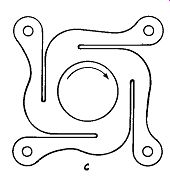
Fig. 1201-c. Tangential arm spider producing rotary cone motion when
used with a free edge suspension.
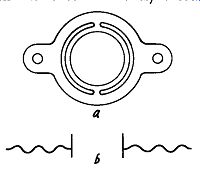
Figs. 1201-a,-b. Various types of spiders: a) concentric type suitable
for use with a molded paper outer suspension; b) molded corrugated type
now widely used, also suitable for molded paper outer suspension.
... greater freedom of movement in the spider than is possible from the outer suspension. This system of suspension will inevitably introduce a well-marked bass resonance, depending on the size of the cone and the flexibility of the suspension system, with a resonant frequency somewhere in the region of about 50 to 150 cycles.
If an attempt is made to avoid this by having a free outer suspension (and very many magazine articles have been written to show just how this can be done), the limiter then becomes the spider. Concentric spiders of the type shown in Figs. 1201-a,-b must obviously have a somewhat limited travel and toward the end of the travel the resistance to motion increases very rapidly since the annular components of the design cannot increase in size. This will still produce a highly emphasized bass resonance. In most speakers which have a "free" outer suspension, the surround is usually a fabric ring as shown in the cross-section of Fig 1202-a.
Thin sheet rubber was actually used way back in 1925 and decently buried after tests showed it to be unsuitable; yet some speakers are offered today with such a surround. The drawback of the flat fabric ring is that it gives very little unrestricted movement.
The original Hartley-Turner speaker had a radically different shape of spider (Fig. 1201-c). The tangential arms are clearly of fixed length but, if the center of the spider is moved forward as though you were pulling the diagram out of the page, they will allow the center of the spider to move forward a quite appreciable amount if the center of the spider is allowed to rotate, as shown by the arrow in the center of the diagram. If the cone to which the voice coil is fastened is attached to the basket by the usual integrally molded paper surround, it cannot rotate and the design has the same limitations as those of Figs. 1201-a,-b, so provision is made to enable the cone to rotate on its axis. This is achieved by fitting a fabric surround with a U molded into it (as shown in Fig. 1202-b) which provides plenty of play to accommodate the rotary motion of the cone. As the cone rotates, it is almost all around the circle, working against the weave in bias, and all woven fabrics can be stretched on the bias. This provides a cushioning effect and the movement of the cone is not decisively snubbed at one particular point. This accounts for the lower peak in Fig. 1005 in section 10, and the feature was so successful that in 30 years it has never been found necessary to modify it.
When I first put this design on the market, I claimed with some justification that I had produced a speaker which had virtually no bass resonance, but I had also to consider what the implications of adopting this design really were. It needed no great technical know-how to appreciate that, as the cone was almost literally free edge, it was free to move as it wanted to. And one thing that a cone does want to do is to node at bass frequencies. To provide the stiffest possible cone meant the use of bakelized paper, much harder and stronger than ordinary molded paper-pulp cones. Such paper comes in flat sheets, so the cone blank had to be cut from the sheet and joined up as a cone. Experiments indicated that the strongest cone should have an included angle of 90° and should be as small as possible. If it were too small, the power-handling capacity at low frequencies would be negligible; if too large, noding troubles would be severe. The final compromise was a diameter of 8 inches. And as the bakelite paper was hard, the top was good. As the cone angle was comparatively narrow, the speaker was very directional.
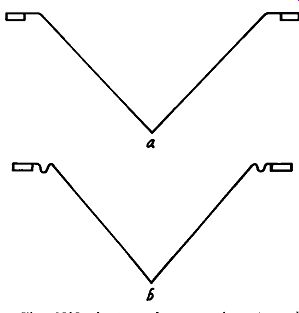
Figs. 1202-a-b. Free edge suspension: a) usual type consisting of a
flat felt, woven cloth, this or sponge rubber ring. Movement is rather
restricted; b) free edge suspension permitting rotary motion arising
from tangential arm spider. Incorrect material or its application will
result in cone drooping.
This account of early work is not meant to prove what a clever person the author is; the purpose is to illustrate that all audio work has to be a compromise. In striving for perfect bass reproduction I had introduced the liabilities of limited power handling at low frequencies and directional treble response. Other manufacturers had decided to have a bass resonance and reduce excessive response on the axis by using exponential cones, which, because they were made of softer paper, had less top. Who was right? There is no answer to that question for it all depends on the user's taste in sound reproduction.
Channels of purity
Of course you will say that, if I had known in those early days what we all know now, I would have devised the near-perfect speaker for bass and another near-perfect unit for treble. But that is just what I did-in 1930! I had traveled sufficiently far along the high-fidelity road to appreciate that the requirements for good bass and good treble reproduction were inherently conflicting. So I constructed a nicely enlarged speaker having an 18-inch cone and restricted the freedom of the cone edge so as to suppress nodes, which could be done because the cone movement would be much less than with an 8-inch cone. To this I added a tweeter speaker with a wide-angle cone of the same material (to maintain constant coloration of the sound emitted) and a carefully designed dividing network. That speaker was displayed at the National Radio Exhibition in London in 1931 and aroused a lot of interest.
It was, I think, the first multi-channel speaker put into production, and I let it run for a year, during which time many people bought it and thought it wonderful. I then withdrew it because I thought it sounded horrible, and the main reason was that the large cone speaker had an air-column resonance within the cone that to my ears was unendurable. I also disliked the sound coming from two separate and distinct sources.
In these sophisticated days it is quite obvious that the widest frequency response is obtained from a three- or four-way speaker system, if mere width of frequency response is what is wanted. The audiophiles want it but I have no real evidence that music lovers want it. Let us consider why. As we grow older, the frequency response of our ears contracts. I am quite certain that my ears had a wider frequency response in 1930 than they have now, and I will go so far as to say that my wartime experiences in England in several blitzes didn't make matters any better. My wide-response ears in 1931 caused me to withdraw my unique "duplex" speaker because they heard things I didn't want to hear, because they weren't in the original music. My impaired hearing of 1957 (although I can still hear 22,000 cycles at about 40 db) still rejects what I hear from a modern multi-channel system for precisely the same reason. What I find unacceptable is the sort of bass I hear from a large-cone speaker, the sort of treble I get at the same time from a tweeter of different diaphragm material, and a lack of continuity of coloration over the whole system.
Speaker coloration
Don't tell me there is no coloration in a modern speaker. I can hear it, and why shouldn't I? ·what makes the difference between a Stradivarius or Amati and a mass-produced fiddle is the stuff of which the instruments are made. ·what makes the difference be tween the woodwind and brass of the orchestra is the stuff of which the instruments are made. What makes the difference between a Steinway and a Bechstein is the stuff of which they are made. You just don't get away from it, and the sound you get from a paper coned woofer is quite different from the sound you get from an aluminum-cone tweeter or an electrostatic speaker for that matter. I can hear it, and music lovers can hear it. But I suspect the audiophile doesn't bother. He seems to want to reproduce the sound of a triangle more triangular than the real thing. I don't mind one little bit if that is what he wants; all I beg is that he doesn't call it high fidelity.
I am quite convinced, from over 30 years of listening to real music and reproduced music, that if we could get perfect reproduction between the limits of 32 and 9000 cycles we should, as music lovers, be quite satisfied. But a long time has passed since that desideratum was laid down, and I would say now that I should like to have a very fine response from 20 to 12,000 cycles. I say that because I have this past year found means of extending what I can reproduce with my speakers, and the extension both ways has a profound effect on the enjoyment to be had from the reproduced music.
Don't get the impression that, because of what I have just said in the way of disliking multi-channel speakers, I deliberately make do with speaker designs that can only reproduce up to 12,000 cycles. The published response curve of my 215 speaker (Fig. 1001 in section 10) shows that it goes on quite gaily up to some thing like 20,000 cycles. But simply because I designed the thing I am more entitled to criticize it than anyone else, for commercial considerations do not enter into the matter. Perhaps I shouldn't foul my own nest but, if I am a purveyor of high-quality reproduction, I see no reason for becoming a purveyor of low-fidelity writing. The 215 speaker does have a useful response at 20,000 cycles and thereby competes very favorably with two-and three-way systems, in spite of its modest appearance. But ... The cone, the coil and distortion I have already explained in Section 10 that cone deformation causes distortion. In a more specific way it can be stated categorically that cone breakup produces upper harmonics of the fundamental frequency applied to the speaker. The cone of my old bakelite-coned speaker did not tend to break up and because of that it seemed to be somewhat lacking in high treble response.
My first effort to improve the top was to use the compliance type of voice coil. Two forms of this are given in Fig. 1203. The first method depends on the fact that at high frequencies the part of the coil nearest the cone is the only one that moves, the elastic compliance between preventing transmission of the coil movement to the remainder of the coil. The second method is the one I adopted. Here the cone is attached to an aluminum tube surrounded by a rubber sleeve which is compressed to some degree by the voice-coil former which carries the winding proper. At low frequencies the whole assembly moves as an integral unit; at high frequencies currents are induced in the single-turn "secondary" winding (the aluminum tube) which alone drives the cone, the elasticity of the rubber compliance isolating the movement from the "primary" voice-coil winding.
This certainly gave me more top, but I was still bedeviled by the directional properties of the narrow-angle straight-sided cone.
In an experimental way I succeeded in producing a small number of molded bakelite cones of exponential shape, but they didn't turn out a regular manufacturing proposition. I therefore turned my attention to seeing what could be done in the way of improving the more ordinary paper cone. Any attempt to stiffen it by applying a hard lacquer only succeeded in increasing the mass so much that any potential improvement brought about by the treatment was nullified by the increased weight. Then it occurred to me that, as the apex of the cone is the part that produces the top, it seemed a sensible thing to separate the apex from the rest of the cone by introducing a cone compliance, just as I had done with the voice coil. So I removed a thin ring of paper about halfway down the cone and replaced it with a film of elastic material in a solvent which was allowed to dry out, leaving the two halves of the cone separate but flexibly coupled. I took a response curve and found the top response had shot up. This was first carried out in 1938 and during the next 12 months I had produced quite a lot of speakers which gave great satisfaction. So it seemed that the idea really worked.
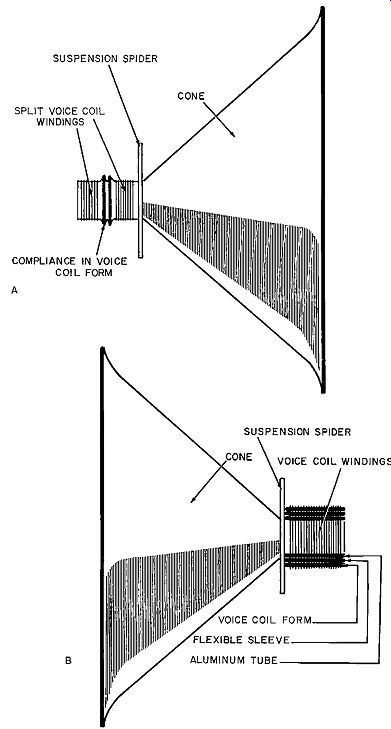
Figs. 1203-a,-b. Two methods of introducing a compliance into a voice
coil; a) split voice coil on a form with center compliance; b) compound
voice coil with intermediate compliance.
After the war I resumed manufacture and still found the idea worked, which tempted me to think about invading the United States market. The 215 speaker was introduced in 1949, the first of many subsequent arrivals from Britain and Europe. The claims made for the speaker were borne out in practice, and it did give a frequency response comparable with more complicated speaker systems without incurring the disabilities of the multi-channel idea.
But in every audio box of ointment lurks a fly. I happened to have one 215 speaker that had escaped the depredations of war, and several made between 1946 and 1950 when I started a new line of investigation in 1956. The cone compliance of the prewar speaker was harder than the paper it joined; the compliances of the 1946-50 period were a good deal stiffer than those of 1956, yet measurement showed that all speakers had the same response in the upper register. The information given in Fig. 1001 (Section 10) was available to me in 1952 and set up a train of thought but no opportunity arose for a more thorough investigation. The findings of 1956 proved that new light was needed on an absurd state of affairs. Work on the deve1opment of a more rigid cone suggested that an exhaustive examination of the behavior of the paper cone should be undertaken. In due course it was discovered that the addition of the "compliance" to the original paper cone had simply resulted in a stiffness pattern being applied to the paper so that the sections of the cone between the stiffer parts vibrated at harmonic frequencies of the applied signals. The original measurement was, in its way, perfectly authentic. A micro phone was placed before the speaker and the measured output plotted against the frequency of the input to the speaker, and the result was the response curve of the speaker. Unfortunately it was not appreciated that the result could be completely mis leading, and it would not be out of order to presume that very many other speakers have inadvertently misleading response curves too! A microphone is not a harmonic analyzer.
With the 220 speaker referred to in Section 10 ready for production, it was only natural to run comparative tests for response between the 215 and the 220. It was found then that the 220 had appreciably less response above 16,000 cycles than the 215, and this could well be due to the fact that the cone, without any form of compliance, was not breaking up. The next step was to try out the new speaker on all kinds of "guinea pigs"-music lovers, audiophiles and audio dealers who could run the thing on A-B tests against everything in their showrooms. Without exception the reports were that, apart from the quite astounding bass from such a comparatively small speaker (the invariable comment was that the stiff 9-inch cone gave more than a paper 15-incher), the top response was incredible. \Ve did not reveal that the speaker had less top than the 215, we just said "here is a new speaker-do what you like with it." My colleagues and I have proved to our own satisfaction that what happens after about 15,000 cycles doesn't matter, and the less there is the better. But if the response is outstandingly good below that figure and free from distortion, then there is a quality of definition that doesn't seem to be attainable by any other method.
Once again I do insist that here is no propaganda for a new design of mine. When all is said and done, the customer will buy what he likes best, but what must be clearly appreciated is that what he likes may not necessarily be accurate reproduction. I have satisfied myself that near-perfect reproduction up to 12,000 cycles will enthrall a genuine music lover (my own personal choice of a pickup doesn't do much over that figure but is supremely good up to that point), and any reproduction up to the frequencies that only dogs can hear not only contributes nothing to the quality but adds a good deal of distraction by reproducing scratches, noises and so on that are not in the original music.
But I cannot admit to any liking for a bass cutoff. In spite of what theory may suggest, I find that the ability of the reproducing system to go down without distortion to below the audible limit does improve what is above that limit. I do not profess to explain why; I just know that it is so. But it calls for a super-excellent turntable. My extremely expensive American record player was found to have such a rumble at 18 cycles tl}at it could not be used, for the rumble alone was enough to overload the speaker, giving a cone excursion of ½ inch. Another point to watch is the way the speaker is mounted or housed. A speaker such as I have just described is really moving things at low frequencies-the air, the box containing it, the floor, walls, ceiling, windows, every thing within range. If you go to church, you must have felt the building tremble when the open diapason of the pedal organ gets going. That is what happens when a speaker with a cone that doesn't fold up is driven by a mere 20-watt amplifier. Very serious attention must be given to the business of mounting and housing.
Audio furniture problems
It might be thought that as I am a professional audio engineer my listening room, music room-call it what you like-has a most imposing array and display of gadgetry. Something like those wonderful montages you see in the magazines from time to time. Well, it hasn't because I haven't got a music room. If you visited my London apartment, or my country place where I have plenty of room to move around and do things, you wouldn't see any audio equipment at all. It is all carefully hidden away be cause in my own home I am not interested in the means, just the end product. To me audio is just a room service like central heating. But while very ready to concede that a man is perfectly entitled to cover the whole of a wall with an audio omnibus, there are several disadvantages in doing that, and those disadvantages are rarely pointed out, possibly because they are inimical to the "planned-layout" idea. I suggest, therefore, before you do plan your layout you consider these points.
Any combined radio-phonograph is unusable unless there is a bass cutoff somewhere in the system. It may be the pickup or the speaker but bass cutoff there must be, otherwise acoustic-mechanical feedback will make the whole system unstable. I recall one lecture I gave at MIT and laid out the demonstrating equipment on the very solid bench of the lecture theatre. I was behind the bench and the ·speaker was facing the audience. I put on my first record and wondered what had gone wrong. In a panic . I checked everything I could think of while the audience thoroughly enjoyed themselves and then took a walk around the bench and saw the speaker cone nearly leaping out of its box. So we put the turntable on chunks of sponge rubber and moved the speaker off the bench., and everything was just what we wanted. The concrete floor did not feed back vibration from the speaker into the turntable. Now you will say that had the turntable been properly spring-mounted to begin with this wouldn't have happened. But I assure you that I have never found any spring mounting that was good for frequencies below about 80 to 100 cycles, and if there is motor rumble added the whole thing becomes impossible to use. So the first way of making a wall-covering installation work is to put in a bass cutoff.

Fig. 1204. Possible speaker locations. Speaker positioning must be determined
by trial and error.
Next, it is very tempting, if you have such a layout, to put the speaker into its compartment so that it is nicely tucked away; There is only one place, as a rule, in a room where the speaker sounds best. It can be found by trial and error (Fig. 1204) as it is almost impossible to plot the acoustic characteristics of the listening room with ordinary measuring equipment. So the speaker in a suitable enclosure must have a long connecting lead and the thing moved about until the best results are obtained. You can be pretty sure it won't be flat against the wall at the exact point you have marked in the layout. But over and above this is the question of where you are going to put the sound that comes from the back of the speaker diaphragm. Are you going to use an infinite baffle, meaning a closed box, or a reflex housing which allows the back sound to come out of a port? Let us consider these alternatives. But first let us consider the simplest way of all of mounting a speaker-on a flat baffle.
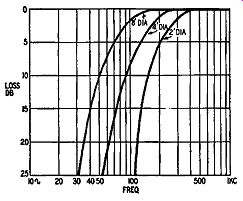
Fig. 1205. Bass loss with finite baffles.
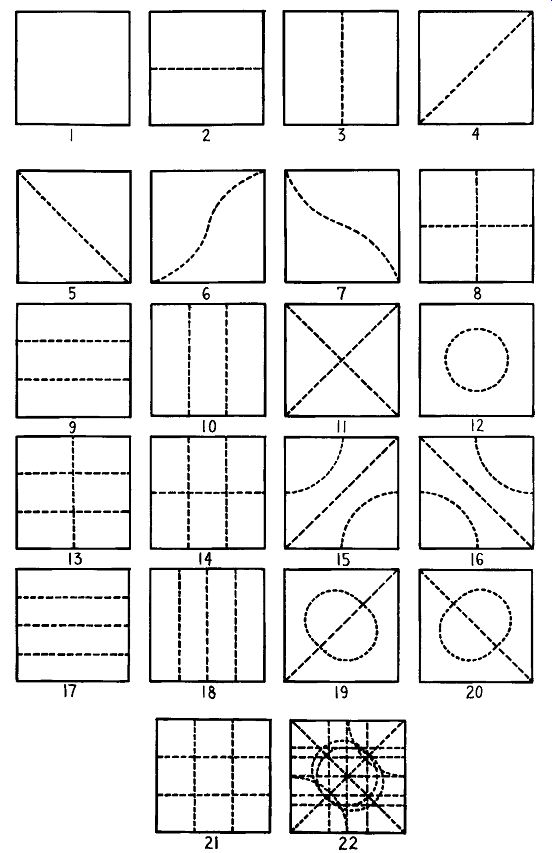
Fig. 1206. Nodal lines in a fiat baffle: 1) fundamental with nu node,
baffle being rigid for power applied to the speaker; 2-i)
2nd harmonic nodes; 8) 3rd harmonic nodes; 9-12) 4th harmonic nodes; 1)-16) 5th harmonic nodes; 17-20) 6th harmonic nodes; 21) ith harmonic nodes, 22) complex pattern formed by 2nd to 7th harmonic nodes.
Bass and baffles
Fig. 1205 shows the bass lost by using finite baffles of various sizes. If the baffle is "bent" into a box, then the equivalent baffle
diameter is the shortest path from the front edge of the speaker opening across the front and side and the diagonal path from the back edge to the back of the speaker opening. As pointed out in Section 10, the minimum size for adequate reproduction of a 50-cycle note is 12 feet, and where can this be stowed away in an ordinary room? Fig. 1206 shows where a flat baffle bends. The fundamental frequency referred to in that figure depends, of course, on the size of the baffle; in other words, the baffle's bass resonant frequency. Bending the baffle into box shape raises the resonant frequency since the edges of the box are stiff, but each side and the front will resonate independently. Hence the suggestion that the best box baffle should be either double-skinned and the space between filled with sand, or the box should be made of brick or concrete. There are two forms of resonance in a speaker enclosure-resonance of the air within the box and resonance of the box itself. If the box is closed, making it "infinite," the disturbance of the air inside is even greater and will actually interfere with the movement of the diaphragm.
The flexing of a speaker baffle is a function of the power applied to it by the power fed into the speaker. Harmonics of the natural fundamental resonant frequency of the baffle develop along nodal lines in the baffle (Fig. 1206). If the fundamental is 60 cycles the second harmonic is 120, the third 180 and so on. The baffle would node something like the last sketch in the figure shown on page 215 with all harmonics present up to the seventh-a nasty sight. If the flat baffle is formed into a cubical box, the front and all the sides will node in a somewhat similar manner for each of the elements of the box is itself a membrane. The front, however, is fixed on four edges, the four sides on three edges. If the box is a closed box, all six membranes are fixed on four edges. The nodal patterns will be identical in all six sides with a closed box, but with an open box the four sides will equal each other but differ from the nodes of the front. How much effect this can have on smoothing the overall response is almost impossible to estimate; a rectangular box will give different nodal patterns for front, top and bottom and sides.
All this virtually implies that a speaker with really first-class bass response down to the lowest frequencies is almost impossible to use in an enclosure, and the only practicable baffle is a brick wall with a hole in it. And that is really the ideal way of mounting a speaker, even if the back sound is wholly lost-except in the next room. But fortunately there actually are ways of housing such a speaker, and the method evolved (shown in Fig. 1207) is the device I christened the "Boffle." This is a stage-by-stage absorption of the sound from the back of the speaker diaphragm, the essential feature being that slabs of air alternate with slabs of sound-absorbing material. As the sound-absorbing material is carried round the frames that support it and jammed between the frames and the sides of the box, the box is damped too. All that comes out of the back, which is not closed, is' a low-pitched rumble severely attenuated. Recent development work has indicated that carefully calculated filters can be arranged so that a delay is applied to the escaping bass sound to bring it into phase with what comes from the front of the speaker, so reinforcing the bass. Unfortunately at the time of writing I have insufficient data to be able to give a practical design. It will come as soon as I have satisfied myself that it does what I want it to do.
It will be clear that the straightforward flat or box baffle can't be used in that wall montage because there is no place for the back sound to go. A reflex enclosure has a port which lets it out so that type could be used. The design data has been given in Section 10; here I need only say that, if the enclosure is properly designed, then the effect the enclosure has on the speaker is to reduce the peak in the impedance curve indicating bass resonance by replacing it with two other peaks of lesser magnitude one above and one below the resonant frequency. The size and port dimensions of the enclosure are dependent on the size of the speaker and its bass resonant frequency, and to get the desired result the design must be right. It follows that you can't just go into a store, buy a speaker unit you rather fancy and a reflex housing that appeals to your eye and your pocket and put the two together.
They may be completely unmatched. Yet people do that every day and once again they are free to do it if they feel that way, but the result is not high fidelity. And whether the matching is right or wrong, it is perfectly obvious that the speaker in its enclosure is a system of resonators. I have always been of the opinion that a high-fidelity reproducing system must be absolutely and completely acoustically inert. There are so many things that can't be inert, as I have already indicated. Why make life more difficult by employing resonators?
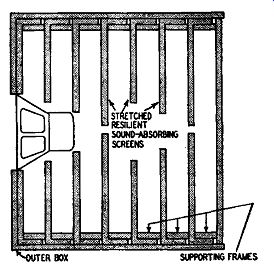
Fig. 1207. The Hartley Baffle. Each set of four sound absorbing screens
forms an acoustic filter, the example shown comprising a 2-stage filter.
Note that sound absorbing material is nipped between the screen frames and sides of the box to damp out resonances in the box sides and adding the frame thickness to the box wall thickness.
I sincerely think that the large entirely complete wall layout system is musically worthless. By all means have one if you want it, as something to play with. But, if your basic aim is to reproduce music, then you will not only save a lot of money but get better quality sound if you think in terms of the amplifier being a device that needs no control and so can be hidden away in a cupboard; the radio tuner and the record player (with, of course, the control amplifier) as something that can be put together into quite a small box that can be closed up when not wanted, and the speaker either mounted in the wall or in some enclosure that does not resonate itself.
I have pointed out in Section 10 that to get good bass reproduction from a horn-loaded speaker, the horn must be at least 22 feet long and have a flare opening of 24 feet. You can fold the 22 feet of length into something more compact but I don't know of any way of folding the circumference of the flare into something smaller. Another point: I have shown you how a flat or box baffle nodes and resonates, and this can be overcome to some extent by very rigid and strong construction, damped with sound-absorbing material if necessary. Exactly the same applies to a horn, for all the various panels and deflectors will resonate in precisely the same way. But the internal surfaces of the horn must be smooth. As in a folded horn one piece of wood may form. both the inside and outside of the horn and as both surfaces can be part of the inside it is impracticable to try to damp out the resonances by applying sound-absorbing material. The wood must be thick and rigid enough not to resonate. I would advise that, when examining any folded-horn enclosure offered to you, thump the assembly in various places with your closed fist. You will not find anything made of wood that is acoustically dead, and the speaker will make it acoustically alive.
This is no condemnation of well-designed speakers properly mounted in folded-horn cabinets. If the cabinet is well made and the speaker has a fairly level response at all frequencies, the combination will sound pretty good except with high power at low frequencies. Then it is extremely difficult to damp out resonances in a complex structure. For this very reason I become more and more convinced that complexity in a high-fidelity sound system is a mistake. The more parts there are, the more the chances of distortion being introduced through something not working as it ought to.